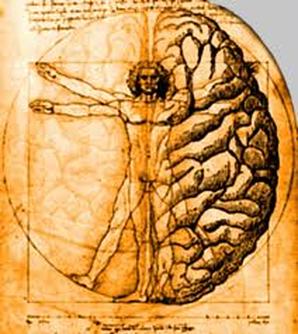Mood-as-input & Perseverative PsychopathologiesThis project is investigating the role of the mood-as-input hypothesis in perseverative psychopathologies – including chronic worrying, compulsive checking and depressive rumination; there may be an opportunity to extend this perseverative hypothesis to other psychopathologies such as gambling and pathological hoarding. The mood-as-input hypothesis attempts to explain perseveration at worrying, compulsive checking, depressive rumination and addictive behaviour in terms of the way that an individual’s mood acts as information about whether to stop or not.
Sample publications: Meeten F & Davey G C L (2011) Mood-as-input hypothesis and perseverative psychopathologies. Clinical Psychology Review, 31, 1259-1275. Hawksley J & Davey G.C.L. (2010) Mood-as-input and depressive rumination. Behaviour Research & Therapy, 48, 134-140. MacDonald C.B. & Davey G.C.L. (2005) Inflated responsibility and perseverative checking: The role of negative mood. Journal of Abnormal Psychology, 114, 176-182. |
Embodied Emotion & PsychopathologyThis project is concerned with the role of embodied cognition in psychopathology experiences. This view argues that psychopathology experiences (e.g. feeling anxious, depressed, etc.) are an embodied re-experience of those emotions. This means that psychopathology experiences (1) reflect the re-enactment of perceptual, motor and bodily states acquired during the experience, and are predominantly modal in nature, and (2) contain embodiments that have become established in memory (e.g. activation of facial expressions and postures associated with negative mood, depression, anxiety when these emotions are experienced). This line of research predicts that embodiments associated with various emotions not only contribute to emotional experience, but they also influence cognitive processes relevant to psychopathology.
Sample Publication: Davey G C L, Sired R, Jones S, Meeten F & Dash S R (2013). The role of facial feedback in the modulation of clinically-relevant ambiguity resolution. Cognitive Therapy & Research, 37, 284-295. |
The Bidirectionality HypothesisThis project is investigating the relationship between cognitive/clinical constructs and the behavioural symptoms associated with psychopathology. The traditional view is that clinical constructs (e.g. inflated responsibility, beliefs about worrying) cause relevant symptoms (e.g. compulsive behaviour, pathological worrying), but there is evidence that these causal links are bidirectional (i.e. being compulsive can also cause changes to beliefs about inflated responsibility). This research area aims to look more closely to see if behaviours related to psychopathology can influence cognitions.
Sample Publication: Davey G C L, Meeten F, Barnes G & Dash S R (2013) Aversive intrusive thoughts as contributors to inflated responsibility, intolerance of uncertainty, and thought-action fusion. Clinical Neuropsychiatry, 10, 30-40.. |
The Role of Working Memory Capacity in PsychopathologyThere is some evidence that individuals with low working memory capacity tend to be prone to anxiety-based disorders, and that their low working memory capacity may contribute to their difficulty in controlling anxiety when anxiety-provoking situations are encountered. This area of research will be investigating the potential role of working memory capacity in the experience and control of anxiety, and how this relates to various anxiety-based symptoms (such as pathological worrying, perseverative compulsions, safety behaviours, etc.)
|
Low Intensity Interventions for Worry and Anxiety Based on Mood-as-Input HypothesisThis project aims to socialize participants to the basic principles of mood-as-input hypothesis, provide them with guidance on how to identify worry-relevant goal-directed decision rules and negative moods, and provide them with some guidance on how to change their default decision rules and manage their moods. The project involves both controlled intervention studies, comparing the effects of the mood-as-input intervention with appropriate control conditions, and will also develop the intervention as an internet- or app-based self-help procedure.
Sample Publication: Dash S R, Meeten F, Jones F & Davey G C L (2014) Evaluation of a 4-session psychoeducation procedure for high worriers based on mood-as-input hypothesis. Journal of Behavior Therapy & Experimental Psychiatry, 46, 126-132 |





